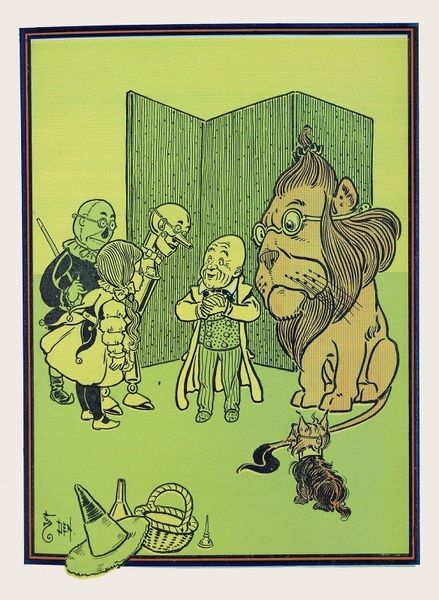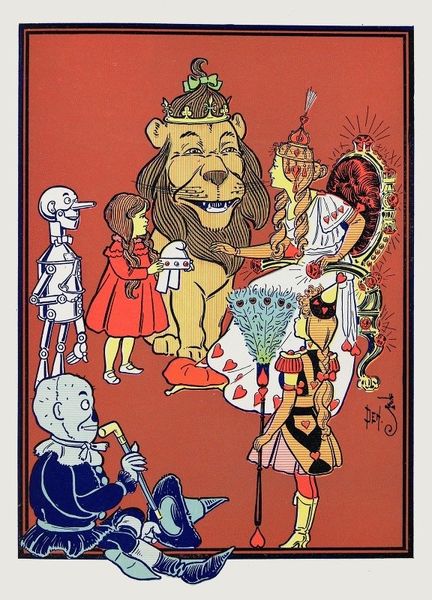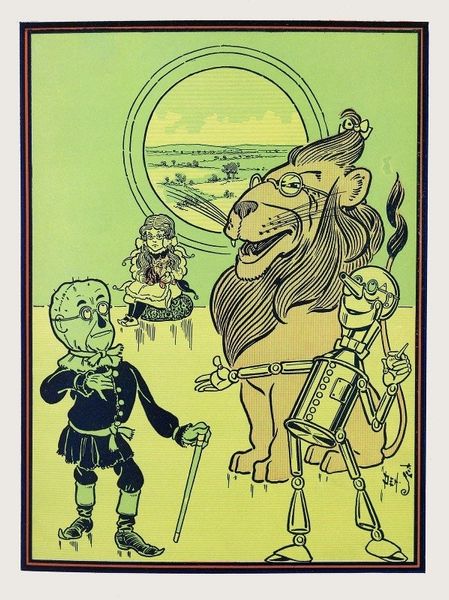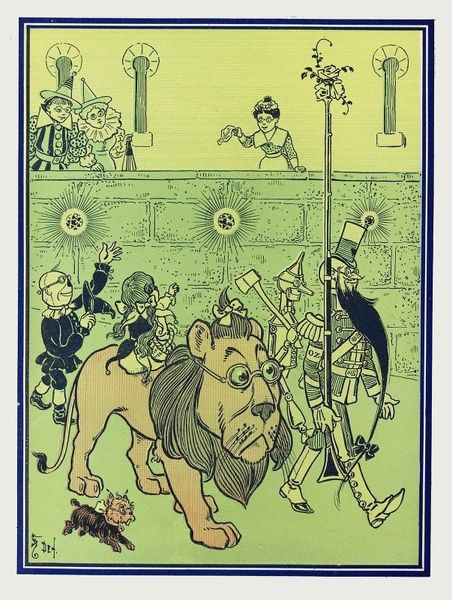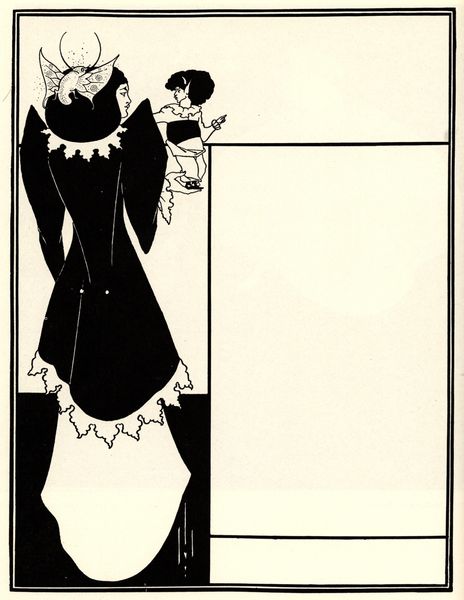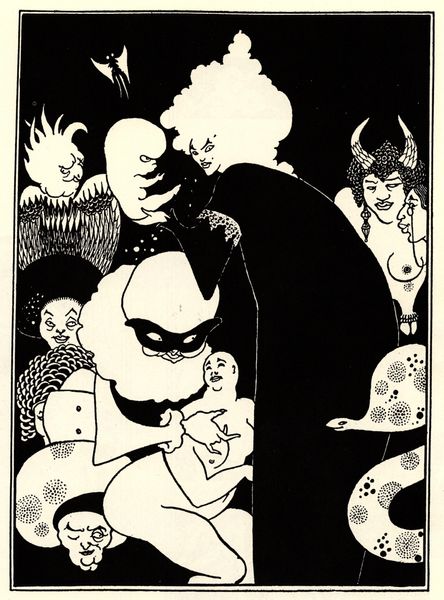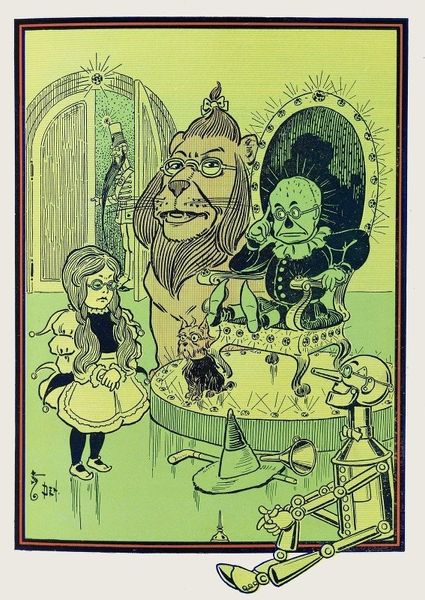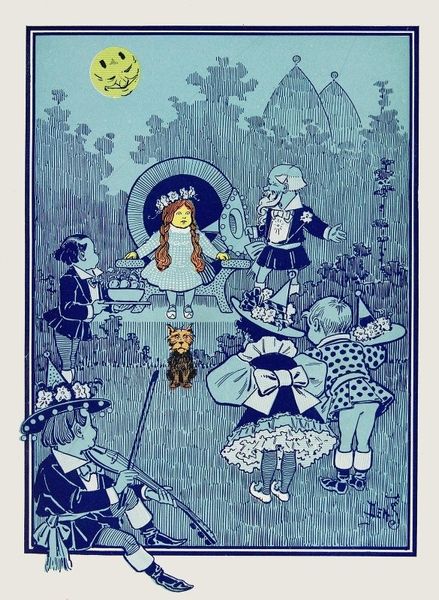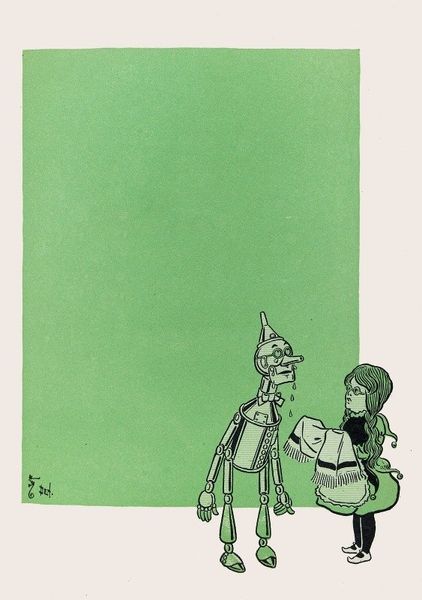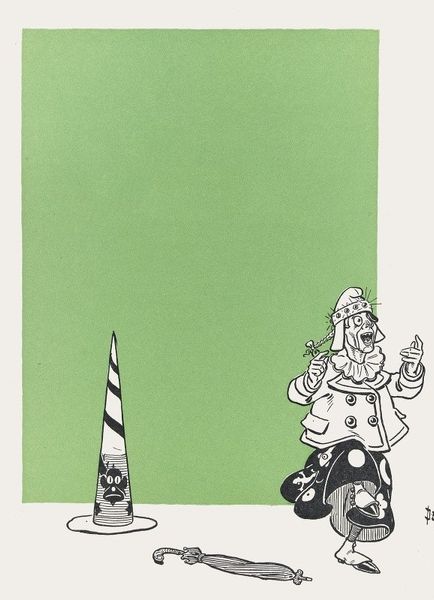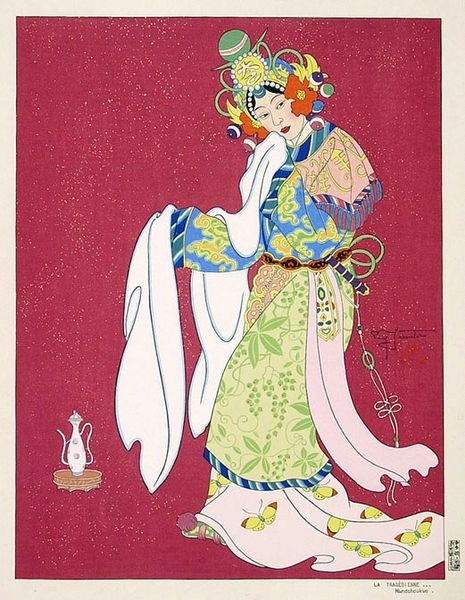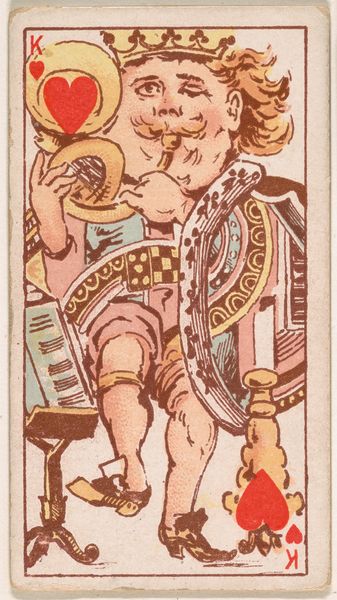
drawing, print, paper
#
drawing
#
quirky illustration
#
art-nouveau
#
childish illustration
#
cartoon like
#
cartoon based
#
narrative-art
# print
#
fantasy-art
#
junji ito style
#
cartoon sketch
#
figuration
#
paper
#
illustrative and welcoming imagery
#
folk-art
#
symbolism
#
cartoon style
#
decorative-art
#
cartoon carciture
#
cartoon theme
#
miniature
Copyright: Public Domain: Artvee
Curator: William Wallace Denslow’s "These people are all made of china", created around 1900, immediately strikes me as enchanting. The color palette is whimsical. Editor: It has the same decorative feel that’s so characteristic of turn-of-the-century illustrations, but the content puzzles me. It presents these paper-thin figures on pedestals. Who do you think the intended audience for Denslow's paper artwork would be? Was it simply to create an engaging visual for a children's tale or something more profound? Curator: Denslow made these to accompany his illustrative work on “The Wonderful Wizard of Oz” a book that certainly shaped turn-of-the-century society. The image suggests a blurring of fantasy and reality, potentially reflecting a childlike imagination and an allegorical take on society where everyone is easily breakable. We might ask, what cultural values do they represent? The figures have similar outfits, although their activities on their own are completely separated. Editor: You are focusing on the cultural value of these images, but there is an aspect to their materiality as well, it's just flat on a surface with paper medium. As the original material, its function may not have simply been aesthetic or storytelling alone; the pieces, their fragility. Curator: Their composition makes sense given that many forms of paper entertainment for the young have similar patterns to their materiality—playing cards, stencils, illustrations in a children’s story book for learning—paper is readily accessible. They underscore the importance of materiality for an understanding of both artwork and life itself. Editor: Indeed, it prompts me to consider the physical engagement between the child and their games. Are these illustrations of material to play, cut, build? How does that influence how children learn or use their imagination through tactile means? Curator: I see these playful patterns of distribution in "These people are all made of china," but they're presented flat and frontal for the gaze, to entertain children who can learn through these very images. They certainly allow room for imagining complex themes of society. Editor: This approach emphasizes process and reception rather than aesthetic values; the materials used determine a great deal about function and utility. Denslow really delivers these notions through imagery. Curator: I can see what you mean by exploring all the material considerations with paper medium—they bring their own value. Thanks to this visual structure, we can come away with the impression of these cultural values more closely. Editor: Thank you; I appreciate that observation. The dialogue and contrasts between our viewpoints helps show different points.
Comments
No comments
Be the first to comment and join the conversation on the ultimate creative platform.
